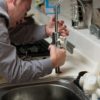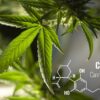Most cannabis growers spend their first few cycles just trying to keep plants alive and reach harvest. Once you’ve got the basics down, though, that’s when things get interesting. The difference between an okay harvest and a genuinely impressive one often comes down to small adjustments that seem minor but create surprisingly large improvements in your results.
Here’s the thing about optimization – it’s not about completely overhauling your setup or spending thousands on new equipment. It’s about identifying the specific areas where small tweaks give you the biggest returns. And honestly, most growers are sitting on untapped potential in their current setup without even realizing it.
The Temperature Sweet Spot Nobody Talks About
Everyone knows cannabis needs the right temperature range, but most people treat it like a general guideline rather than a precision target. The difference between 75°F and 80°F during flowering might not sound like much, but it can affect terpene production and overall potency more than you’d expect.
The problem is that growers often measure temperature in one spot and assume it’s consistent throughout their space. But your canopy temperature can be several degrees different from your ambient room temperature, especially under powerful lights. Infrared thermometers cost almost nothing and let you measure leaf surface temperature directly, which is what actually matters to your plants.
Nighttime temperatures deserve just as much attention. That drop when lights go off isn’t just normal – it’s beneficial. Many growers see temperatures stay too high at night because their ventilation system keeps pumping warm air. A 10-15 degree drop during the dark period can improve your final product noticeably, particularly with color development and resin production.
Humidity Control Beyond Just “Lower in Flower”
Yeah, everyone learns to drop humidity during flowering to prevent mold. But the relationship between humidity and vapor pressure deficit (VPD) affects how efficiently your plants can transpire and uptake nutrients throughout the entire grow cycle.
Young plants in vegetative growth actually perform better with higher humidity than most people maintain. We’re talking 65-70% for the first few weeks. It reduces stress on the root system while those plants establish themselves. Then you can gradually decrease it as they mature, rather than just running one humidity level for all of veg and then dropping it suddenly when you flip to flower.
The real optimization happens when you match your humidity to your temperature and growth stage. There are VPD charts available online that show you the ideal combinations, and dialing this in properly can increase growth rates by 20-30% without changing anything else about your setup. For quality supplies and equipment to help manage your growing environment, Click here to explore options suited for Australian growers.
Air Circulation That Actually Moves Air
Most grow spaces have a fan or two pointed at the plants, and growers figure that’s good enough. But proper air circulation does way more than just strengthen stems – it affects how efficiently your plants can photosynthesize and transpire.
The goal isn’t to blast your plants with wind. It’s to create gentle, constant movement throughout the entire canopy. Dead air pockets where CO2 gets depleted and humidity builds up limit your plants’ potential even if the overall room conditions look perfect on your meters.
Oscillating fans work better than stationary ones, obviously, but placement matters more than fan count. One well-positioned fan creating circulation patterns through your whole space beats three fans all pointed the same direction. You want that subtle leaf movement throughout the canopy, not just the outer edges getting buffeted while the interior stays still.
Light Positioning Changes Everything
This is where a lot of growers leave serious yields on the table. Your lights might be perfectly good, but if they’re positioned poorly, you’re not getting what you paid for.
Most people hang their lights, set the height based on manufacturer recommendations, and call it done. But as plants grow and develop, optimal light distance changes. During early veg, you can keep lights closer without stress. As plants enter flowering and become more light-sensitive, that perfect distance becomes more critical.
The edges of your grow space typically receive significantly less light intensity than the center. Rotating plant positions every few days ensures everyone gets time in the prime spot rather than having edge plants consistently underperform. It’s tedious, but the difference in final harvest uniformity is immediately obvious.
Light schedules also offer room for optimization. The standard 18/6 for veg and 12/12 for flower works fine, but some growers find better results with slight variations like 20/4 in veg or even experimenting with 11/13 during flower for certain strains. Small adjustments to photoperiod can trigger different expressions from the same genetics.
Watering Frequency Over Volume
Here’s something most growers get backwards: they focus on how much water to give rather than how often to water. Cannabis roots need wet-dry cycles to stay healthy and develop properly. Constantly moist soil might seem nurturing, but it limits oxygen availability to roots and can slow growth dramatically.
Smaller, more frequent waterings during active growth periods often outperform the “water heavily and wait” approach, especially in larger containers. This is obviously strain and medium dependent, but many growers find their plants respond better to being watered every 2-3 days rather than weekly soakings.
The weight method remains the most reliable way to judge watering needs. Lift your containers when they’re freshly watered, then lift them again before the next watering. You’ll develop a feel for when they’re actually ready rather than going by calendar days or guessing based on surface soil dryness.
The Final Weeks Matter Most
The last two weeks before harvest probably influence your final product quality more than any other single period in the grow cycle. This is when trichome production peaks and when small environmental tweaks create the most noticeable differences.
Dropping temperatures by a few extra degrees during these final weeks can enhance color development and terpene profiles in many strains. Some growers reduce light intensity slightly or even decrease the light schedule to 11/13 or 10/14 to simulate fall conditions, which can trigger more resin production as a stress response.
Harvest timing itself represents a major optimization point. Most growers harvest too early, not realizing that the final days add significant weight and potency. Checking trichomes with a jeweler’s loupe or digital microscope lets you harvest at true peak ripeness rather than guessing based on breeder timelines or pistil color alone.
Small Investments That Pay Off
Some optimizations require minimal spending but create substantial improvements. pH meters need regular calibration – a bottle of calibration solution costs a few dollars and ensures your readings stay accurate. Inaccurate pH causes all sorts of problems that growers blame on everything except their poorly calibrated meter.
Timers with multiple daily settings let you split light cycles or run exhaust fans on schedules rather than constantly. This level of automation removes human error and maintains consistency that manual operation can’t match.
The point isn’t to implement every possible optimization simultaneously. Pick one or two areas where your setup could improve, make those adjustments, and observe the results over a full grow cycle. Then tackle the next optimization. Small, methodical improvements compound into dramatically better harvests without requiring dramatic changes to your basic approach.








